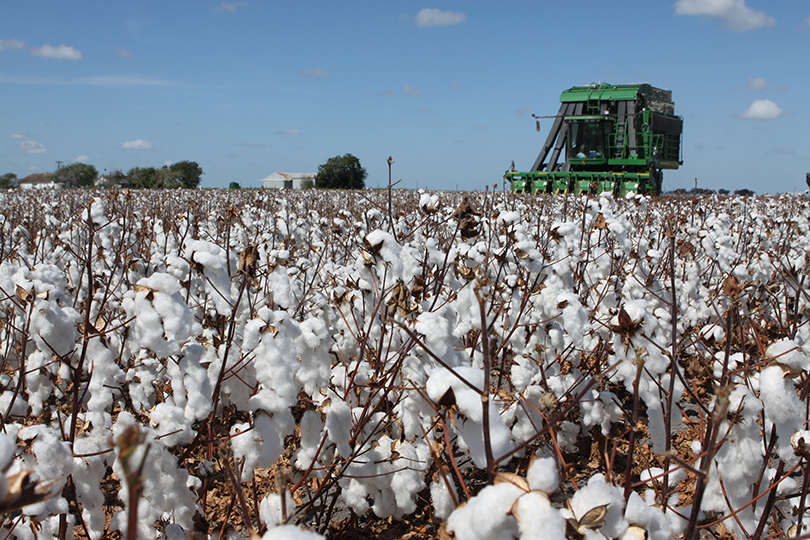By Shala Gean
Communications Specialist
As cotton harvest progresses across the Lone Star State, so does the impact of Hurricane Harvey.
Billy Maresh grows more than 1,000 acres of cotton in Falls, Milam and Bell counties. He said rainfall from Hurricane Harvey delayed his ability to defoliate and get his crop ready for harvest.
His fields in Milam County received eight to 12 inches of rain from the storm.
Maresh usually applies the first defoliant application around the end of August in preparation for harvest, but the rainfall pushed it back two weeks. Because of the delay, the cotton put on new growth.
“Instead of one application, we had to put two applications and some of it with an airplane, which is relatively expensive,” Maresh, who farms both dryland and irrigated cotton, said.
The weather kept him from planting most of his cotton last year, but this year his crop is turning out well.
His yields are ranging from 750 to 1,400 pounds per acre, depending on whether its dryland or irrigated cotton.
“I think the quality is going to be pretty good if we don’t get any more rain,” Maresh said. “The irrigated quality should be really good.”
Anthony Gola and his brother Adam also expect a good year with consistent yields, but rains at the wrong times during planting could impact their yields.
The brothers grow 1,000 acres of cotton in Williamson and Milam counties.
Last year, seed quality issues hurt cottonseed prices, and prices started out low this year due to forecasts of a bumper crop. Hurricane Harvey’s impact on the cottonseed market is still unclear.
Farmers usually sell their cottonseed to cover ginning costs, according to Brant Wilbourn, Texas Farm Bureau associate director of Commodity and Regulatory Activities. If seed prices are down, farmers can’t cover the ginning cost, and that’s an additional expense cutting into their profits.
“We are really dependent on cottonseed price,” Anthony said. “It’s going to be hard to achieve break even or make a good profit.”
Current cotton prices, however, are slightly higher than other commodity prices.

